Today’s Current Affairs: 4th August 2025 for UPSC IAS exams, State PSC exams, SSC CGL, State SSC, RRB, Railways, Banking Exam & IBPS, etc
Table of Contents
Sawalkote Hydropower Project:
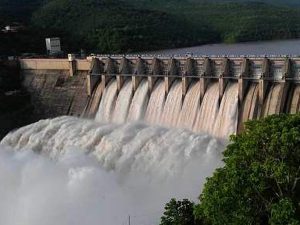
Months after India put the Indus Waters Treaty (IWT) on hold, it is now moving to revive a long-stalled Sawalkote Hydropower Project on the Chenab, first envisioned six decades ago but held back by the treaty with Pakistan.
- Sawalkote Hydropower Project is a 2,185 megawatt (MW) run-of-the-river hydroelectric plant proposed on the Chenab River in the Ramban District of Jammu and Kashmir.
- It will be the largest hydroelectric project in the Union Territory and one of the biggest in North India.
- The project was first conceptualised in the 1980s and revised several times due to environmental and technical concerns.
- The project, to be executed by National Hydroelectric Power Corporation (NHPC) Ltd in collaboration with Jammu and Kashmir State Power Development Corporation Limited (JKSPDC), is estimated to cost ₹22,704 crore
- The project would feature a 5-metre roller-compacted concrete gravity dam.
- It is expected to generate over 7,000 million units of electricity annually.
- It is expected to enhance power availability in the Union Territory, especially during winters when electricity shortages are frequent.
- It also has the potential to turn J-K into a power-surplus region, creating scope for exporting surplus energy to the national grid.
- By regulating the flow of the Chenab River, the Sawalkote project could contribute to flood mitigation downstream, while also ensuring better water management for agriculture and domestic use.
American singer Justin Timberlake Battling with Lyme Disease:

American singer Justin Timberlake has announced that he was battling Lyme disease during his recently wrapped up world tour.
- Lyme Disease is a bacterial infection that can be spread to humans by infected ticks.
- It is caused by the bacteria Borrelia burgdorferi.
- It primarily affects the skin, nervous system, heart and joints.
- It was named after the town of Lyme, Connecticut, United States, where it was first identified in children in 1976.
- It is most commonly reported in North America, Europe and some parts of Asia.
- It’s also known as Lyme borreliosis.
- It’s transmitted (spread) to humans through a tick bite.
- Not all tick bites cause Lyme disease.
- Only deer ticks (also called black-legged ticks) can spread the bacteria that cause Lyme disease.
- These ticks are commonly found in wooded or grassy areas worldwide, particularly during warmer months.
- It cannot spread between humans, from pets to humans, through air, food, water, or lice, mosquitoes, fleas, and flies also do not transmit it.
- Lyme disease occurs in stages. The signs and symptoms of each stage can overlap.
- Typical symptoms include fever, headache, fatigue, and a characteristic skin rash called erythema migrans.
- Untreated Lyme disease can cause severe arthritis and damage the heart and nervous system.
- Most cases are treatable with antibiotics although recovery can take time, especially for those who are left undiagnosed in the early stages.
- Even after treatment, some symptoms may linger.
HQ-16 Missile:

The United States military publicly unveiled a mockup of a Chinese HQ-16 surface-to-air missile system, drawing attention at this year’s Experimental Aircraft Association ‘AirVenture Show’ in Oshkosh, Wisconsin.
- The HQ-16, known by its NATO designation CH-SA 16, is a medium-range Surface-to-Air Missile (SAM) system developed by China and based heavily on Russia’s Buk missile family.
- It is designed to engage enemy aircraft, cruise missiles, helicopters, and unmanned aerial vehicles.
- HQ-16 features a vertical launch system, giving it 360-degree coverage and the capability to fire in a complicated geographical environment.\
- The missile system is mounted on a Chinese-designed 6×6 high mobility chassis instead of tracked platforms, providing ease of maintenance and better road mobility.
- Each launch vehicle carries up to 6 missiles.
- The missile weighs 650 kg, has a length of 5.2 m and a diameter of 0.34 m.
- It can intercept flying aerial targets at altitudes of 15 km to 18 km.
- The maximum interception range for aircraft is 40 km, between 3.5 km and 12 km for cruise missiles flying at 300 m/s.
- The missile guidance system comprises inertial guidance and semi-active radar homing at the terminal phase.
De-notified, Nomadic and Semi-Nomadic Tribes:
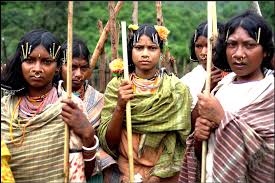
There is a call for the establishment of a permanent national commission for Denotified, Nomadic, and Semi-Nomadic Tribes.
- Denotified Tribes (DNT) also known as Vimukta Jati, are the tribes that were listed originally under the Criminal Tribes Act of 1871 as criminal tribes.
- Once a tribe becomes “Notified” as a criminal, all its members were required to register with the local magistrates, failing which they would be charged with a ‘crime’ under the Indian Penal Code.
- After Independence, this Act was repealed in 1952, and the communities were “denotified”, hence the name.
- Nomadic Tribes are the communities who usually do not have land and move from one place to another for livelihood.
- The DNT/NT/SNTs are among the most neglected, marginalised, and economically deprived communities.
- Historically, these communities never had access to private land or home ownership and used forests and grazing lands for their livelihood and residential use.
- In India, roughly 10 percent of the population is Denotified and Nomadic.
- While the number of Denotified Tribes is about 150, the population of Nomadic Tribes consists of about 500 different communities.
- In 2014, the Ministry of Social Justice and Empowerment constituted a National Commission for DNT/NT/SNTs under the chairmanship of Bhiku Ramji date for a period of three years-
- to prepare a State-wise list of castes belonging to DNT/NT/SNTs
- to suggest appropriate measures in respect of Denotified and Nomadic Tribes that may be undertaken by the Central Government or the State Government.
- In 2017, the commission prepared draft lists of DNT/NT/SNTs.
- Based on the Commission’s recommendations, the ministry constituted the Development and Welfare Board for Denotified, Nomadic and Semi-Nomadic Communities (DWBDNCs) in 2019.
- The Board has been mandated to formulate and implement welfare and development programmes for these communities.
- The Renke Commission (2008) was earlier commissioned to identify and list the DNT communities.
Krasheninnikov Volcano:
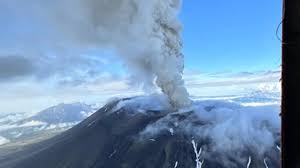
The eruption of the Krasheninnikov volcano was recently recorded for the first time.The Volcano erupted on 2 August 2025, three days after a nearby magnitude 8.8 earthquake. Ash emissions reached an altitude of 20,000 ft.
- Krasheninnikov Volcano is an active complex volcano located in the Eastern Kamchatka Peninsula, Russia.
- The Kamchatka Peninsula lies along the Pacific “Ring of Fire.”
- There are 114 volcanoes on the Kamchatka Peninsula that have erupted during the Holocene Epoch (approximately 12,000 years ago to the present).
- Krasheninnikov is a stratovolcano and reaches a height of 1,886 meters.
- The volcano is located in a collapsed caldera.
- It is made up of two eruptive cones in a 9 km wide caldera.
- The southern cone of Krasheninnikov contains a crater 800 m wide and 140 m deep.
- Its last eruption took place about 400 or 600 years ago.
Apna Ghar Initiative:

The Ministry of Petroleum and Natural Gas recently launched an ambitious initiative named ‘Apna Ghar’ aimed at improving truckers’ long-haul journeys across the country.
- It is an initiative of the Ministry of Petroleum and Natural Gas, Government of India.
- It aims to provide comfortable and hygienic resting spaces for truckers across major highways in the country.
- As of July 1, 2025, a total of 368 ‘Apna Ghar’ units with 4,611 beds have been set up by Public Sector Oil Marketing Companies (OMCs) at retail fuel outlets along national and state highways.
- The facilities at ‘Apna Ghar’ include:
- Dormitories (10-30) beds
- Restaurants/Dhabas
- Self-cooking areas
- Clean toilets
- Dedicated bathing areas (Houdas)
- Purified drinking water facilities
- Tech Integration: ‘Apna Ghar’ mobile application introduced for reservations, reviews, and driver interaction.
- Public-Private Execution: Developed and overseen by OMCs at retail fuel outlets.
- User-Focused Design: Tailored to the requirements of truckers, guided by their feedback and insights from mobile app data analysis.
PM National Dialysis Programme:

The Government of India has significantly expanded the reach of the Pradhan Mantri National Dialysis Programme (PMNDP) and it is now operational across all 36 States and Union Territories, covering 751 districts.
- It was rolled out in 2016 to provide dialysis services free of cost to Below Poverty Line (BPL) beneficiaries at the district hospitals in the country.
- It is being implemented under the National Health Mission (NHM) to provide free dialysis services to patients suffering from end-stage kidney failure in Public Private Partnership (PPP) mode.
- The programme supports both Haemodialysis and Peritoneal Dialysis services.
- Under this initiative the PMNDP portal was launched which will integrate all the dialysis centres operational in the state under NHM and facilitate building of renal registry and ensuring portability within the state (One State One Dialysis) and later throughout the country (One Nation-One Dialysis).
- The NHM provides financial assistance to States and UTs for establishing and operating dialysis centres to ensure equitable access to kidney care services for all, regardless of geography.
- Nodal Ministry: Ministry of Health and Family Welfare
Investor Education and Protection Fund Authority:

The Investor Education and Protection Fund Authority (IEPFA) is in the final phase of testing its Integrated Portal, a unified digital platform designed to streamline claim processes and enhance accessibility for both investors and companies.
- The Investor Education and Protection Fund Authority (IEPFA) was established in 2016 under the Companies Act, 2013.
- It manages the Investor Education and Protection Fund (IEPF) and promotes investor awareness and financial protection.
- It makes refunds of shares, unclaimed dividends, matured deposits/debentures etc. to investors and promotes awareness among investors.
- It is dedicated to safeguarding investor interests by facilitating the return of unclaimed shares and dividends and advancing financial literacy nationwide.
- Through flagship initiatives such as Niveshak Didi, Niveshak Panchayat, and Niveshak Shivir, IEPFA empowers individuals to make informed financial choices and fosters a financially aware citizenry.
- Nodal Ministry: Ministry of Corporate Affairs
- The IEPF consists of amounts that remained unclaimed for 7 years, including:
- Unpaid dividends,
- Application money due for refund,
- Matured deposits and debentures,
- Interest on investments from the fund,
- Grants or donations received from the government or other entities
Alpine musk deer:
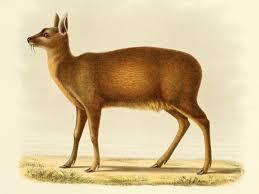
A Central Zoo Authority report reveals a mix-up in identifying the Alpine musk deer for conservation breeding, mistakenly initiating programs for the Himalayan musk deer instead.
- The Alpine musk deer (Moschus chrysogaster) is a musk deer species found only in Asia.
- It is not a true deer, but rather its family is closely related to Bovidae, the group that contains antelopes, bovines, sheep, and goats.
- It is generally solitary and a crepuscular animal.
- It inhabits coniferous and deciduous forestsin the mountain regions at elevations of 3,000–5,000 m.
- It is a ruminant herbivore, foremost a browser and feeds mainly on forbs, grasses, moss, lichens, and shoots, leaves and twigs of shrubs.
- It is mainly found in India, Nepal, Bhutan and China.
- Conservation Status
- IUCN: Endangered
- CITES: Appendix I
- Wildlife Protection Act, 1972: Schedule I
- Threats: The main threat to the Alpine musk deer is poaching for its musk, which is used in cosmetic products.
Mount Lewotobi Laki Laki:
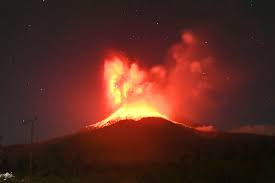
Mount Lewotobi Laki Laki, one of Indonesia’s most active volcanoes erupted, spewing ash up to 18 km high and covering nearby villages with volcanic debris.
- Mount Lewotobi is located on the Indonesian island of Flores. It lies along the Pacific “Ring of Fire,” known for intense seismic activity.
- The volcano is part of a twin-peaked system called Lewotobi, meaning “husband and wife.” It consists of the Lewotobi Lakilaki (man) and Lewotobi Perempuan (woman) stratovolcanoes, whose summit craters are located less than 2 km apart on Flores Island.
- The Ring of Fire, or Circum-Pacific Belt, is a 40,000 km zone around the Pacific Ocean marked by intense seismic and volcanic activity. It hosts 75% of Earth’s volcanoes (over 450) and 90% of earthquakes.
- This eruption ranks among Indonesia’s largest since 2010, when Mount Merapi erupted, killing over 350 people and displacing hundreds of thousands.
- Merapi, located in Yogyakarta, is Indonesia’s highly active and known for frequent eruptions and deadly pyroclastic flows (fast-moving avalanches of hot gas and volcanic debris) posing major hazards over the past two decades.
Right to Repair in India:
India accepted a proposal to introduce a Repairability Index for electronics. This marks a key step towards making the Right to Repair a consumer right. However, experts warn that India’s informal repair economy—rich in tacit, generational knowledge—is being neglected in digital and AI policy frameworks. Right to Repair’ refers to the legal right of consumers to repair and modify their own products or access affordable third-party services.
Global Trend: EU mandates access to spare parts and manuals; U.S. states and the UN SDG 12 also push for repair-based sustainability. Department of Consumer Affairs launched a Right to Repair portal (2023), covering electronics, autos, and farm tools.
Rising bird deaths near turbines:
India added 3.5 GW of wind power in early 2025, marking 82% annual growth, but a Wildlife Institute of India study raised concerns over rising bird deaths near turbines in Rajasthan’s Thar Desert, sparking debate on the ecological impact of renewables.
Findings from the WII Study (Thar Desert):
- Conducted over a 3,000 sq. km area in Jaisalmer, Rajasthan.
- Studied 90 wind turbines and found 124 bird carcasses.
- Estimated 4,464 bird deaths per 1,000 sq. km per year.
- In control sites with no turbines, no bird deaths were recorded.
- Critically endangered species like the Great Indian Bustard are at risk.
- The study found raptors to be the most affected bird group.
- Collisions with both wind turbine blades and associated power lines were major causes.
RBI Approves Merger of New India Co-operative Bank with Saraswat Bank:
The Reserve Bank of India (RBI) has approved the merger of New India Co-operative Bank with Saraswat Co-operative Bank, the largest urban co-operative bank in the country. The merger will officially take effect from August 4, 2025.
Under the approved Scheme of Amalgamation,
- Saraswat Bank will take over all assets and liabilities of New India Co-operative Bank.
- All branches of New India Co-operative Bank will now function as Saraswat Bank branches.
- Customers and depositors of New India Co-operative Bank will be treated as customers of Saraswat Bank, with their interests fully protected.
- This step is expected to provide greater stability, enhanced services, and stronger financial backing for customers of the merged entity.
Operation Akhal:
Operation Akhal, a joint anti-terror operation in Kulgam district of Jammu and Kashmir, entered its third day, with at least one terrorist killed amid continued firefight by Indian security forces. A high-intensity counter-terrorism operation launched in the Akhal Khulsan forest area of Kulgam, Jammu & Kashmir. Launched by: Jointly conducted by the Indian Army’s Chinar Corps, Jammu & Kashmir Police, and the Special Operations Group (SOG). Aim is to neutralize 3–5 terrorists based on intelligence inputs, tighten internal security, and dismantle local terror modules.
Matri Van Initiative:
The Union Minister for Environment, Forest and Climate Change, along with the Union Minister for Housing and Urban Affairs launched the ‘Matri Van’ initiative.It is an initiative under the ‘Ek Ped Maa Ke Naam’ Programme of Government of India.It is a theme based urban forest dedicated to nurturing generations through mother-nature-inspired green efforts – would be developed in an area of 750 acres in the Aravalli Hill area. It is envisioned as a unique ecological and cultural space that will contribute to biodiversity, public well-being, and urban sustainability. This vision would be achieved through a multi-stakeholder collaboration involving CSR partners, Resident Welfare Associations (RWAs), NGOs, multinational corporations (MNCs), school children and government organizations. The main components of the ‘Matri Van’ would include removal of existing bushes like Kabuli Kikar (Prosopis juliflora) and plantation of Dhak/Amaltash Trees along Gurugram-Faridabad Road, while creating theme-based Plantation Groves to restore local ecology in the Aravallis. It would further include nature trails, cycle track, yoga places, sitting places/gazebos, public facilities, parking at four corners, treated water irrigation system/misting/sprinkling, waterbodies at selected locations for conservation of water and to check urban flooding.




